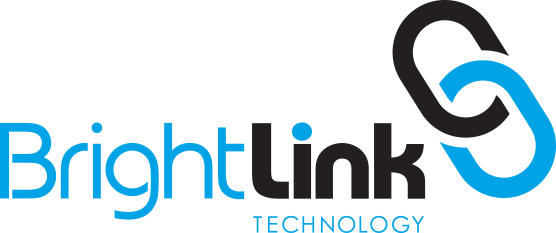Research shows that in the last five years, more than 54% of companies in the world experienced downtime that lasted longer than 8 hours – that’s a loss of one entire day of work. Only 2 percent of companies were able to recover in under one hour!
Quick responsiveness is the hallmark of enterprising organizations. In this highly-competitive marketplace, even a half hour of delay can lead to businesses missing out on valuable opportunities. This is especially so for small and medium-sized companies, who already have competition from local businesses and multi-national corporations.
Setting in place a plan that can help these businesses quickly and efficiently recover from turbulent times, is extremely important. This is where disaster recovery planning comes in.
What qualifies as a “disaster” for small and medium-sized businesses?
- Hardware failure or malfunction
- Software corruption through virus or malware
- Cybersecurity breaches and online attacks/hacking
- Blackouts and power-related machine failures
- Machine and/or vehicle breakdown
- Natural disasters or office accidents
These disasters, if unaddressed, can have a far-reaching negative impact on the success and longevity of the organization.
Benefits of having a disaster recovery plan in place
- Downtime avoidance
- Provides a well-defined process for employees
- Mitigates revenue loss during unplanned outages
- Critical data integrity protection
- Avoids loss of employees, customers and investors
- Increases business reputation
Reducing Downtime
Disaster recovery plans enable businesses to avoid downtime completely or recover faster during times of crisis, while simultaneously training staff to recognize signs of disaster before it strikes. This helps companies to mitigate downtime and get back on their feet much faster.
Well-defined Process
A well-defined process provides a ready-to-use guide containing all steps necessary for employees to carry out during times of disaster. These processes ensure a more agile and efficient recovery process during times of disaster.
Revenue Loss
Did you know, based on industry surveys, businesses lose on average $5,600 per minute during IT failures or network downtime? If that figure seems outlandish to you, ask yourself these questions: How much work could you get done if your server or network was shut down? What revenue loss would be acceptable in that situation? If your answers are “most of it” and “zero”, then we can help you formulate a disaster recovery plan to eliminate the technology challenges that would incur expenses and losses for your business.
Critical Process Recovery
Critical processes are activities and events which are essential for a company’s operation and survival. These critical processes are business and team specific. Disaster recovery plans are highly customized to meet both company and specific team recovery objectives. Critical process recovery helps employees get their systems back on track quickly and reduce negative impacts to the business.
Data Integrity Protection
One of the core objectives of any disaster recovery plan is the protection of confidential business data. With this plan, managers know where and how to access critical data during times of crisis. integrity protection also defines how and where to store the data in order to prevent it from being accessed by hackers.
Loss of Employees, Customers and Investors
When disaster strikes, tempers run high and frustration is rampant. Employees, suppliers and investors may choose to cut ties with your business if they sense that your company is unable to recover from the loss. Disaster recovery plans help prevent this by outlining the steps that managers and owners need to take to get their business up-and-running smoothly.
Reputation
While providing all the above benefits, disaster recovery plans ensure that the brand image of the company is not damaged in the eyes of the public, their employees and, most importantly, their customers.
Planning for IT failure and IT recovery
Servers, laptops, desktops, the internet and all the other technologies that businesses use as part of their daily operations are vulnerable to attacks. The loss of a single file—especially one which contains important client information—can bring business to a halt. With retention costs increasing by the day, companies need to address IT failures immediately to prevent the loss of customers. Additionally, given the cost of acquiring new customers is 5x higher than retaining them, new customers might not be as easy or as inexpensive as previously imagined.
This is where an IT disaster recovery plan comes into play. Disaster plans contain a step-by-step breakdown of all the actions, technologies and recovery mechanisms needed to recover the company’s IT resources.
Getting started on an IT disaster recovery plan includes:
- Inventory analysis of hardware and software
- Itemizing inventory at granular levels
- Ranking IT systems and processes by criticality
- Measuring the cost of IT downtime
- Estimating loss of revenues during downtime
- Estimating loss of productivity during downtime
- Estimating cost of replacing or recovering data
- Estimating costs of intangible effects (such as loss of brand image, loss of website traffic, loss of social media capital due to data breach)
- Defining responses to both online and offline IT failures
- Keeping staff informed about their role in the IT recovery plan
- Updating and fine-tuning the recovery plan in real-time
Factors that affect a disaster recovery planning process
Disaster recovery isn’t easy, and its success often depends on multiple factors, such as:
- Criticality of the data to the business
- Scope, functionality, and vulnerability of existing technology to disaster
- Support provided by various stakeholders to the business during crisis
- The flexibility of organizational policies and procedures to account for disaster recovery
- Budget allocation for disaster recovery activities
- Organizational plans
In saying this, it’s important to remember that disaster recovery isn’t a one-size-fits-all solution. These plans can be customized and personalized to meet the needs and constraints of the business.
About BrightLink Technology
BrightLink Technology, located in Jacksonville, FL, is a managed service provider for small- to medium-sized businesses. With over 100 years of combined network management experience, the BrightLink team delivers proactive technology setup, support and maintenance with fast and reliable response times. Call today to schedule a complimentary consultation—(904) 619.1966 or email info@dev.brightlinktech.com.


